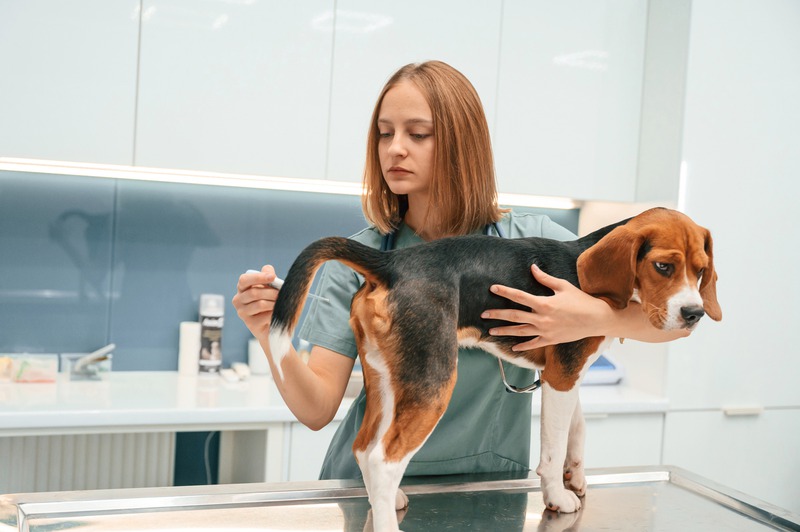When it comes to the well-being of our furry companions, keeping them clean and well-groomed goes beyond just making them look good. It’s about their health and comfort, too. One question that often pops up is whether regular grooming can ward off those pesky little critters that can make life miserable for pets and pet owners alike: fleas and ticks. So, let’s get down to business and talk about the role grooming plays in preventing these infestations and what more we can do to protect our pets.
The Importance of Grooming in Flea and Tick Prevention
First up, understand that grooming is more than a fur-deep pampering session. It’s our front line of defense against fleas and ticks. But how exactly does a schedule of brushing, bathing, and trimming help keep these parasites at bay? Let’s look into it.
Frequent Brushing
Brushing isn’t just for keeping your pet’s coat shiny; it’s also a critical time to check for unwanted guests. Using a flea comb as part of your regular grooming routine can help you catch fleas and ticks before they settle in for the long haul.
Bathing Bliss
Next, we come to bathing. This isn’t about drowning the little buggers – although a good scrub does kill some fleas. It’s more about creating an inhospitable environment for them. A clean coat with flea-repellent shampoo can go a long way in keeping fleas and ticks away.
Trimming Trials
If you have a long-haired breed, managing all that fluff with regular trims can reduce hiding spots for ticks and make your flea-comb exploits more effective.
Attention to Detail
-
Ears: These warm, hidden spots are a haven for ticks. Regular cleaning discourages them from setting up camp.
-
Paws: In between the toes is another favorite tick hidey-hole. While grooming, pay extra attention here.
-
Underbelly: Fleas and ticks love the soft, less-guarded areas of your pet’s body, making thorough belly rubs a part of protective pet care.
The Whole Picture: Grooming Plus Prevention Measures
While keeping your pet spick and span is surely a deterrent, it’s not a foolproof strategy on its own. Integrating regular grooming with a full-fledged flea and tick prevention plan is our best bet in keeping our companions safe. Let’s talk about some additional steps we can take.
Topical Treatments and Oral Medications
These are remedies you can get from your vet, which usually offers monthly protection against fleas and ticks. They’re very effective when used correctly.
Environmental Control
Cleaning your home and your pet’s environment is as crucial as grooming. Vacuuming, washing bedding, and using flea- and tick-specific treatments can help stop infestations from spreading or taking hold in the first place.
Let’s remember their pet vaccinations services as well. While they don’t directly prevent flea and tick infestations, keeping up with these preventive measures keeps your pet’s immune system strong, which is essential should they ever come up against these pests.
Regular Vet Visits
Whether it’s a yearly checkup or a specific concern, a visit to the vet is an opportunity to discuss and revise your pet’s flea and tick prevention plan. Many veterinary facilities like Crossroads Veterinary Hospital are such places where you can get expert advice and care tailored to your pet’s needs.
Pet Lifestyle
We also have to consider our pet’s lifestyle. Outdoor adventurers need more robust prevention strategies compared to indoor loungers. Knowing your pet’s habits and the risks in your area helps tailor their protection.
Grooming as a Bonding Experience
Regular grooming isn’t just a chore; it’s quality time with your pet. It’s during these one-on-one moments you’re most likely to notice if something’s off. Early detection can make all the difference in handling flea and tick infestations.
The Power of Observation
As you groom, stay alert for signs of irritation, scratching, or biting that might indicate the presence of fleas or ticks. Even the best preventive measures aren’t 100% effective, so keeping a keen eye out is crucial.
Comfort and Trust
Grooming builds comfort and trust between you and your pet, which makes them more likely to tolerate exams and treatments that are part of flea and tick prevention.
For the Little Ones: Kitten Care
Younger pets, like kittens, are particularly vulnerable to parasites. Suppose you’ve welcomed a new feline family member. In that case, it’s essential to find a kitten veterinarian early on to start them on the right healthcare path, including grooming and flea and tick prevention.
Final Thoughts
Protecting pets from fleas and ticks involves more than just grooming. It requires a combination of regular cleaning, prescribed medications, managing their surroundings, and consistent vet visits. Grooming helps detect issues early, but it’s just one part of a comprehensive strategy. Working with a vet and maintaining daily care routines help keep pets healthy and free from pests. Staying proactive is key to preventing parasite problems and ensuring pet well-being.


